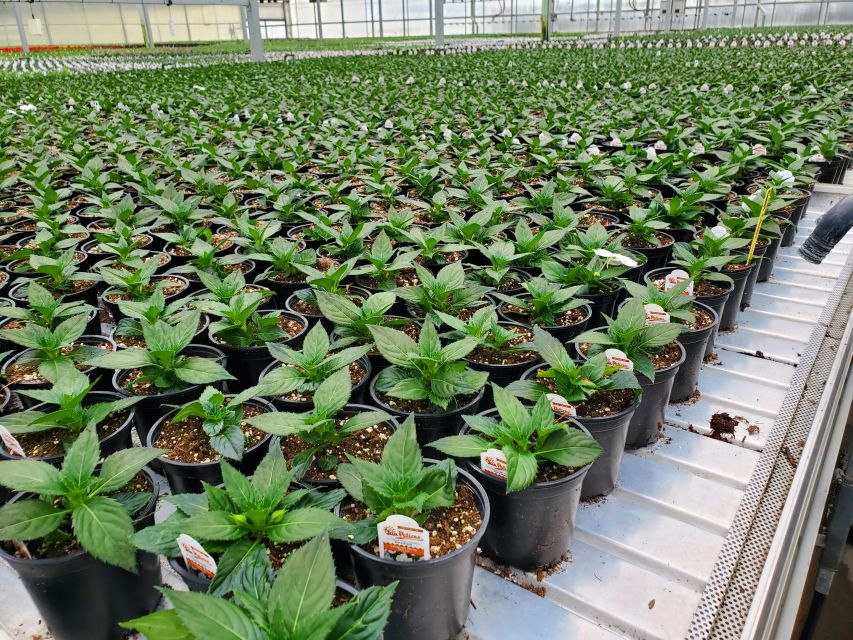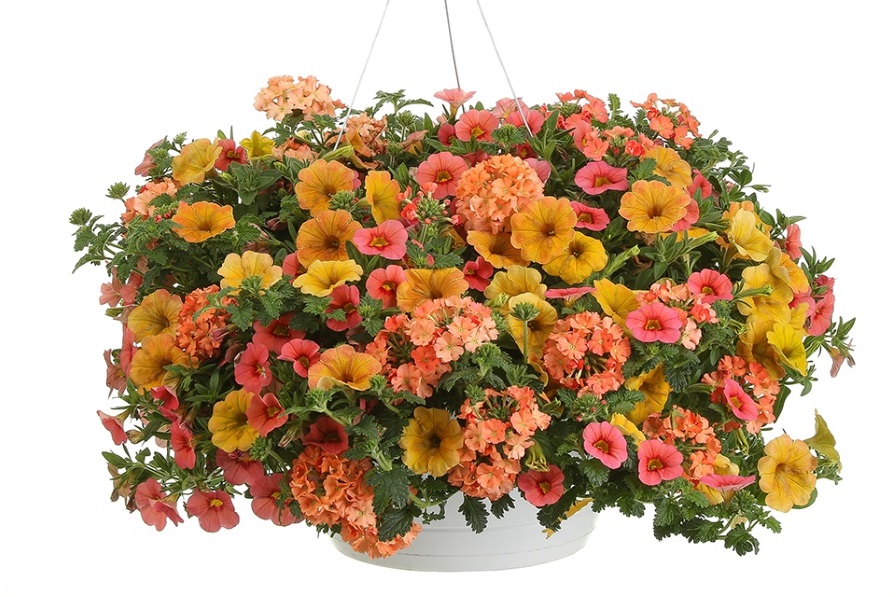Following a Clean Chain in the Greenhouse Through Finishing

At Plantpeddler, growers separate crops by breeder to reduce potential for spreading diseases. Photo: Plantpeddler
Mike Gooder, Owner and CEO of Plantpeddler in Cresco, IA, is passionate about clean chain production. Gooder works closely with breeders around the world and offshore farms to grow vegetatively propagated annuals. Through those interactions, he has observed many processes to grow clean, healthy plants for the industry. However, these clean chain practices are not always communicated to the growers.
“This is on a very personal basis,” Gooder says. “I work closely with the breeders and offshore farms and I see how dedicated they are. I know the steps they take to ensure the industry’s success. That’s why I’m so committed to this issue of maintaining the clean chain into the finish process.”
Plantpeddler shares an informational document with its customers when shipping plant material. This document outlines tips for preparation, receipt of plant material, planting, irrigation, and post-plant to maintain the clean chain. Greenhouse Grower recently caught up with Gooder to hear more of his recommendations.
Sanitize the Greenhouse
The overarching goal of clean chain production is to minimize risk exposure. Growers should consider their suppliers — they should be reliable and have a proven track record for clean crops. If there are companies that accentuate their disease and pest management protocols, choose them, Gooder says.
Sanitation is a key factor for healthy crops. Growers should clean their facility long before the new plant material arrives. Gooder recommends a thorough cleanup at the end of every crop cycle. There should be no remaining soil or plant debris. If an operation had a disease issue but did not clean up post-season, there is a high chance of infecting the new crops. Growers should clean again before the next crop rotation. At Plantpeddler, Gooder says his team cleans the benches from top to bottom, including the ceiling of the greenhouse.
“You can get fungal spores on the greenhouse films,” he says. “When you get condensation drip, you can drip botrytis or other diseases onto the crop.”
Separate Crops by Breeder
When plant material arrives at an operation, growers should separate crops from different suppliers first, then breeders, and keep the farm source tags with the trays. If plant material from one source has a disease, it could be spread quickly and easily if placed near the other crops. Plants from different breeders have been kept separate at offshore farms and rooted cuttings providers, so growers who finish the crops should maintain the clean chain, says Plantpeddler Sales Manager Stacy Bryant.
“One of the easy things is if you’re going to plant geraniums from two or three different producers, the first question you need to ask yourself is ‘Why? Can I source everything I need from a single breeder so I can mitigate risk?’” Gooder says.
By keeping the farm source tag with the trays, growers can identify and isolate any disease issues. Photo: Plantpeddler
Consider a Planting Sequence
When planting crops, Gooder says growers must think about their sequences. Growers should plant the crops first that are most sensitive to disease, such as petunias and calibrachoa. End your day planting the less sensitive crops. This reduces the risk of spreading disease. At Plantpeddler, the team considers how workers are scheduled throughout the day to ensure that no cross-contamination is taking place.
“Think about your sequence,” Gooder says. “Are you using good hand sanitation? Are you going down the bench randomly or will you disinfect between every 100 plants?”
Plantpeddler also advises growers to use new pots and trays. The pots and trays should be filled with premium growing media from dependable vendors. Growers should avoid co- mingling breeders during planting, as well. Instead, the crops can be planted as a sequence, with hand disinfection between varieties or between a maximum of every 100 plants.
Avoid Splashing Water
Water splashing is one of the most common ways to spread bacterial and fungal diseases, Gooder says. Growers should strive for dry foliage, so they should water the media, not the plants.
To reduce stress on freshly planted liners, growers can immediately irrigate them with multiple applications of clear water to ensure saturation. Most crops can begin feeding once transplant shock is over, usually on the second or third day. To further enhance growth, Plantpeddler suggests heating irrigation water to above 65°F, especially for begonias, impatiens, and tropical species.
Minimize Human Touches
“In most cases, human hands are the greatest spreaders of diseases in the greenhouse,” Gooder says.
He says growers should look for practices to eliminate the need to touch plants during production. Plantpeddler prefers no-pinch production, an objective for all its genera. Their team avoids pinching and shearing because they are some of the most common ways to spread diseases.
“That same level of understanding for the complexity of the diseases we work with has not been very well communicated to the growers,” Gooder says. “If you take a pair of scissors and shear off plants, you might have sap on the scissors that has a virus in it. It can be easily transmitted to the plants you’re trimming down the line.”
Instead of using knives, scissors, and trimmers, Plantpeddler recommends using plant growth regulators to enhance branching and habit. Growers should keep plants well-spaced to reduce stretch, potential spread of pests and diseases, and scout crops daily.
Gooder says there are new products to help fight bacterial diseases, but vascular diseases are usually terminal. The only way to remedy a vascular disease spread in a greenhouse is by dumping the plants, which significantly affects a grower’s bottom line.
“These issues aren’t going to go away, so as an industry, we all need to rise up and implement our best defense,” Gooder says of battling disease spread. “Our best defense is having a good offense, meaning we are always looking at what we can do to improve our protocols to maintain clean plants.”









